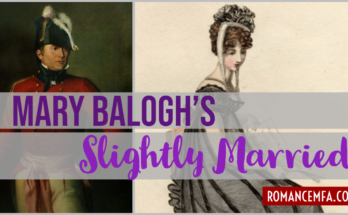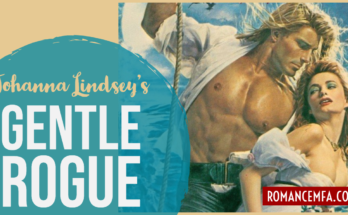Way back in April, after I’d finally made it through Gone With the Wind, I wanted to make sure that I did some follow-up reading that was not written by white racists. I assigned myself five books and, knowing that I was likely to procrastinate forever if I let myself, also set a due date for the end of the year. I did procrastinate, but I finished in time to avoid embarrassing myself publicly. However, I’m now going to share my Well Meaning White Woman’s Thoughts on Race Relations in a Subset of Literature Written by Women of Color and I’m sure there are plenty of opportunities to embarrass myself in that. I’m starting with Alice Randall’s The Wind Done Gone…
Book details:
Title: The Wind Done Gone
Author: Alice Randall
Original publication date: 2001
Setting time & place: 1860s Georgia
He is… Rhett Butler, but getting old and paunchy.
She is… a slave woman freed after the Civil War, Scarlett O’Hara’s half-sister and Rhett’s mistress.
Reasons to read this title: A valuable rebuttal to Mitchell’s racist narrative.
My review of The Wind Done Gone
Is it a romance novel? No. While it does discuss relationships, it’s not particularly focused on love.
Is it a must read romance novel? If you have any strong feeling about Gone With the Wind, negative or positive, you want to read this for the alternate perspective.
The Mitchell estate fought against this book’s very existence, and it is therefore labeled as a parody. It is not a humorous parody. It is a reply, a reconfiguration that flips Mitchell’s story over and shows the knobby knees and holey stockings beneath the voluminous skirts of the mythical plantation. Although much of the story follows the relationship between the narrator, Cynara, and R. (Rhett), it is not a romance. I felt it was more an experiment of literary fiction, as it often dips into dreamlike imagery.
Randall uses her narrative to wrest power from the white characters and, instead, empower the black ones. Each character is renamed: Mitchell’s heroine becomes simply “Other” while her parents are “Planter” and “Lady”. Randall’s heroine, child of Mammy and Planter, leads a parallel life with Other. Her short childhood is spent watching Mammy care for the white child and getting secondhand affection from Lady, who has turned over care of her children to Mammy. As a teen she is sold away and ends up in a brothel: as a maid, not a whore, but she shortly meets R. and is taken up by him as a lover. His fascination with Cynara then becomes the reason for his infatuation with Other and the novel explores the split of affection for Cynara and her white half-sister from the other characters: their mothers, their father, their husband/lover. Interestingly, there is no interaction between the half-sisters after their childhood.
The rest of the novel unfolds slowly, playing on the various parallel relationships and the factors that affect them. Cynara is given the love letters between Lady & her tragic cousin, leaving her to speculate about the infinitesimal differences which divided her life from that of her half-sister. Was Lady sympathetic to Cynara during her childhood because of her own mulatto heritage? Randall’s narrative continues past the events of Mitchell’s novel and sees Other to her grave, leaving R.B. free, in the post-war society, to propose marriage to his light-skinned mistress. She turns him down: while Randall paints R. as in deeply in love with Cynara, Cynara herself seems simply fond of him, and willing to keep him around for the financial stability he provides. When R. brings her to live in Washington, D.C., she also meets and falls in love with a black Congressman. The end is a bit confusing due to the dreamlike imagery I mentioned earlier, but it seems like Cynara bears a child for the black Congressman in the book’s final pages.
He flatters me by claiming the superiority of my table and I reward him with an invitation to take a rest with me on the green velvet couch.
This comes around to the other theme in the novel, probably the one which has caused the numerous one-star reviews and complaints from GWTW-diehards. The way that Randall gives power to the black characters who are otherwise powerless in the antebellum Southern society is by imbuing them with a Machiavellian power over the white characters. Planter’s valet, here called Garlic, conspires with Mammy to run the plantation as they wish and to get rid of any male white babies who might grow up to cause trouble for them. The whites retain the illusion of power but are actually naive dupes.
The Wind Done Gone also presents Mammy & Cynara as the preferred lovers of both Planter & R. Mammy is in touch with her body and sexuality while proper, Catholic Lady must be drugged to go through with the conjugal act. Cynara’s body maintains its sexual appeal as she bears no children to R. (despite his wish for additional children) and thus keeps her flat belly. As I write this out, I’m thinking about what it means that Randall empowers her black female characters through their sexual power over white men. Is it a reclaiming of the fetishization of the Exotic Woman? Is it a commentary on the narrow possibilities for black women to express any power under the structures of slavery?
I looked on JSTOR and found a few articles by persons presumably more qualified than me to consider the questions Randall’s work raises. The most helpful article I found was “A Rib from My Chest: Cynara’s Journey as an Africana Womanist” by Nicole Argall, published in 2003 in the College Language Association Journal. Argall discusses the ways in which Cynara doesn’t meet expectations for a hero in most genres.
Attempting to read her through a feminist of black feminist critique fails, as she acts and thinks in opposition to many of these ideologies…
Cynara’s experience differs little from that of enslaved men, while it has little in common with white women of the time.
Argall therefore suggests that Cynara be read as an Africana womanist, a term new to me but explained as
Africana womanists prioritize their goals for equality in the order of race, class, and then gender (Hudson-Weems, “Critical” 83). They see the need for gender equality but find the advancement of their community as a whole to be much more urgent.
This is a framework which sets what I see perceive as the sexualization of the black female characters as secondary in importance to their use of it to advance the interests of the black characters as a holistic community. It points out to me that as a white feminist, my race is already in charge of society, which leaves me with the leisure to worry about class and gender equality. That’s not something I had considered before, but now I’ll be chewing that over.
Mary Conde, writing in The Yearbook of English Studies in 1996, lists a number of novels by African-American authors that can be viewed as fictional responses to Gone With the Wind–actually, Conde notes
I think it is fair to assume that all African-American fiction about slavery since [Gone With The Wind’s] publication in 1936 has contained some measure of response to it even if this is not made explicit.
Conde reviews several novels, including Jubilee by Margaret Walker, which is a non-parody African-American counterpart and counterpoint to GWTW from 1966, and a book I might have included on my list if I’d heard of it earlier. I am trying to stick to Romance part of the project, so I don’t expect I’ll go back to it, but I’m mentioning it for future readers who may be investigating this path more fully. I’ll be back next time with a discussion of Octavia Butler’s Kindred, a very unromantic view of plantation slavery, before moving on to the three historical romances written by African-American authors and featuring African-American heroines.
JSTOR articles (you can make a free account and read 6 articles a month)
- Argall, Nicole. “A RIB FROM MY CHEST: CYNARA’S JOURNEY AS AN AFRICANA WOMANIST.” CLA Journal, vol. 47, no. 2, 2003, pp. 231–243. JSTOR, JSTOR, www.jstor.org/stable/44325210.
- Condé, Mary. “Some African-American Fictional Responses to ‘Gone with the Wind’.” The Yearbook of English Studies, vol. 26, 1996, pp. 208–217. JSTOR, JSTOR, www.jstor.org/stable/3508659.



